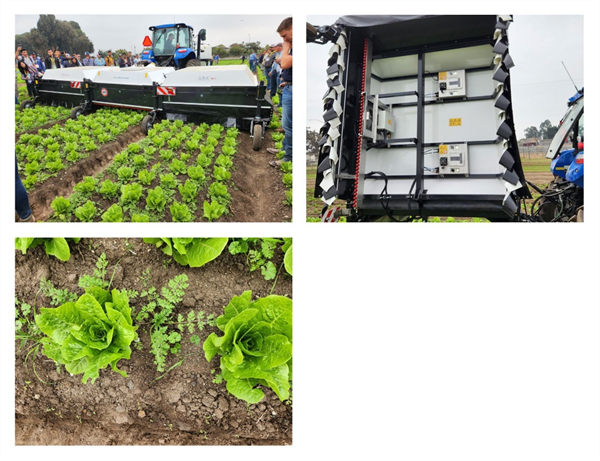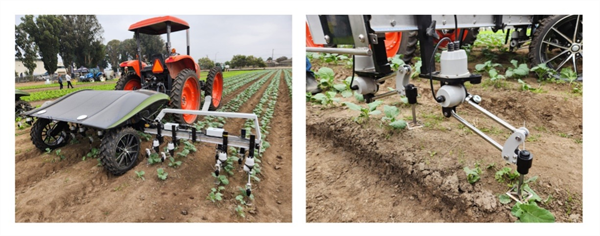
Hi, I’m Chris, and I’m thrilled to be stepping into the role of extension associate for plant pathology through The University of Arizona Cooperative Extension in Yuma County. I recently earned my Ph.D. in plant pathology from Purdue University in Indiana where my research focused on soybean seedling disease caused by Fusarium and Pythium. There, I discovered and characterized some of the first genetic resources available for improving innate host resistance and genetic control to two major pathogens causing this disease in soybean across the Midwest.
I was originally born and raised in Phoenix, so coming back to Arizona and getting the chance to apply my education while helping the community I was shaped by is a dream come true. I have a passion for plant disease research, especially when it comes to exploring how plant-pathogen interactions and genetics can be used to develop practical, empirically based disease control strategies. Let’s face it, fungicide resistance continues to emerge, yesterday’s resistant varieties grow more vulnerable every season, and the battle against plant pathogens in our fields is ongoing. But I firmly believe that when the enemy evolves, so can we.
To that end I am proud to be establishing my research program in Yuma where I will remain dedicated to improving the agricultural community’s disease management options and tackling crop health challenges. I am based out of the Yuma Agricultural Center and will continue to run the plant health diagnostic clinic located there.
Please drop off or send disease samples for diagnosis to:
Yuma Plant Health Clinic
6425 W 8th Street
Yuma, AZ 85364
If you are shipping samples, please remember to include the USDA APHIS permit for moving plant samples.
You can contact me at:
Email: cdetranaltes@arizona.edu
Cell: 602-689-7328
Office: 928-782-5879
At the 2023 FIRA USA Robotics and Autonomous Farming Solutions Forum last month, some of the latest automated and robotic technologies were demonstrated in the field. Several of the weeding technologies demonstrated are brand new to the U.S. and/or Yuma, AZ area. These included a 5.6 inch2 (2.4 x 2.4 inch) resolution fixed boomed spot sprayer (Fig. 1), a high precision, “turret gun” spot sprayer (Fig. 2) and a mechanical weeder that utilizes a unique rotating blade design and lidar for depth control (Fig. 3). Although the test runs were short, I was impressed with the performance and possibilities of these machines. Company representatives said that they would be traveling to Arizona for the season and would like to meet with growers interested in their technology. Company contact information can be found at their respective websites, or feel free to contact me if you would like additional information.

Fig. 1. Ecorobotix1 (Yverdon-les-Bains, Switzerland) precision weeding machine
demonstration at 2023 FIRA USA. The unit has modular, 6.6’ wide spray booms
equipped with 156 individually controllable spray nozzles to spot spray weeds
(top right). A vision system is used to detect weeds and spot spray resolution is
2.4 x 2.4 inches. Darker soil indicates where spray (water) was delivered to
targeted weeds (bottom).

Fig. 3. GreenTech Robotics’ Weed Spider1 (Kelvin Grove, New Zealand)
demonstration at 2023 FIRA USA. The unit is equipped with a vision system for
detecting crop plants and weeds, and blades that move in and out of the crop row
to remove in-row weeds. Lidar sensors are used to create a 3-D image of the soil
surface and control cultivating blade depth.
When I think about Lipid Biosynthesis Inhibitor herbicides, Post (sethoxidim) and Select (clethodim) come to my mind. A great description of these type of herbicides can be found at the Section VI of the Arizona Pest Control Advisor (PCA) Study Guide. They say a good teacher can explain complicated things in a simple way. Please read this explanation by Barry Tickes:
“These herbicides are known as ACCase inhibitors because they inhibit the production of acetyl-coenzyme A carboxylase (ACCase) which is an enzyme needed in the first steps of lipid or fatty acid production. Lipids are needed in the production of new membranes which, among other things, are needed in the production of cell walls. These chemicals move from the foliage to the growing points, only kill grasses, and have very little soil activity. Grasses stop growing immediately and slowly turn chlorotic or red and die usually in 7 to 21 days. These products are used to selectively kill grasses in broadleaf crops".
|
Classification |
Common |
Commercial |
Arizona crop |
|
Aryloxphenoxy |
fluazifop |
Fusilade |
Small grains, |
|
Cyclohexanediones |
sethoxydim |
Poast, Segment, |
Alfalfa, cotton, |
You need to see this .. time lapse photography shows the symptoms of Poast herbicide to wheat.
This time of year, John would often highlight Lepidopteran pests in the field and remind us of the importance of rotating insecticide modes of action. With worm pressure present in local crops, it’s a good time to revisit resistance management practices and ensure we’re protecting the effectiveness of these tools for seasons to come. For detailed guidelines, see Insecticide Resistance Management for Beet Armyworm, Cabbage Looper, and Diamondback Moth in Desert Produce Crops .
VegIPM Update Vol. 16, Num. 20
Oct. 1, 2025
Results of pheromone and sticky trap catches below!!
Corn earworm: CEW moth counts declined across all traps from last collection; average for this time of year.
Beet armyworm: BAW moth increased over the last two weeks; below average for this early produce season.
Cabbage looper: Cabbage looper counts increased in the last two collections; below average for mid-late September.
Diamondback moth: a few DBM moths were caught in the traps; consistent with previous years.
Whitefly: Adult movement decreased in most locations over the last two weeks, about average for this time of year.
Thrips: Thrips adult activity increased over the last two collections, typical for late September.
Aphids: Aphid movement absent so far; anticipate activity to pick up when winds begin blowing from N-NW.
Leafminers: Adult activity increased over the last two weeks, about average for this time of year.







